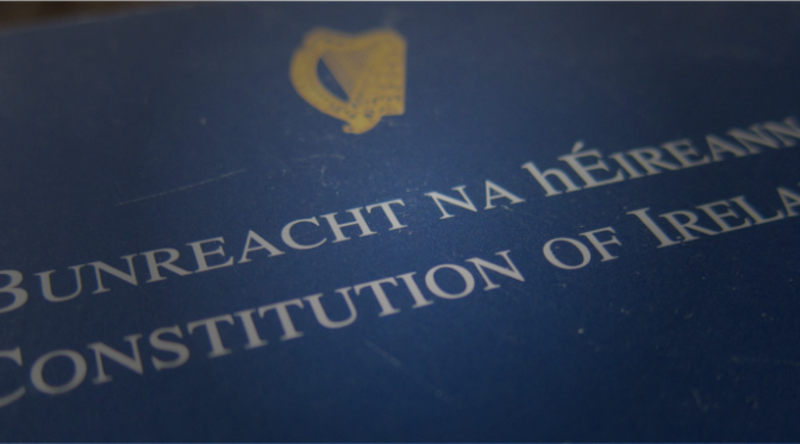Eight days before polling , a relatively unknown locality just a couple of kilometres outside the town of Thurles in Co Tipperary found itself at the heart of a previously sleepy presidential election campaign.
Peter Casey’s visit to Cabragh Bridge, to see for himself the development of six new houses built for Traveller families who have been encamped across the road for four decades, was dismissed as a “stunt” by the Travellers and their representatives. It was also widely criticised in the media and by the main political parties.
But Independent TD Michael Lowry, whose Holycross home is just a few kilometres from the Cabragh Bridge site, said he was not surprised by Mr Casey’s result in the election. The candidate secured 21 per cent, according to exit polls.

“When this started, I was hearing it and I was hearing people saying they were going to make a statement, that he [Mr Casey] was actually saying what they had in their minds,” Mr Lowry said.
“He was reflecting their views on it. I was surprised by people I met and what I learned was that it was across society. It wasn’t just one section. It was businesspeople; it was working-class people; it was middle-income people and particularly in rural areas.”
Mr Lowry said he supported Michael D Higgins’s candidacy, but understood Casey voters’ frustrations. “They were saying, when we have a problem we have no-one to listen to us. If they say anything about them [Travellers], they’re jumped on.”
Mr Lowry also put Mr Casey’s vote down to an hitherto “lethargic” campaign in which his comments “triggered a debate” which gave people something to focus on. “This kind of resentment has been smouldering and building for a period of time.”
Mr Lowry’s Tipperary constituency colleague and fellow Independent TD, Mattie McGrath, agreed. “He [Mr Casey] has hit an underbelly of feelings that are there, especially in rural Ireland, outside of Dublin...This is an issue going on 30 years,” he said, regarding difficulties between Traveller people and the settled community.
“It’s a taboo, nobody wants to touch it. Then the whole area of the housing crisis we have, and to see a development like that [Cabragh Bridge]...”
Exactly how much Mr Casey’s visit to Cabragh Bridge, and his remarks on Travellers in the days preceding and succeeding it, contributed to his leap from 2 per cent support in opinion polls - with fieldwork taken before the controversy caught fire - to coming second in Friday’s election, is now the source of much speculation.
While Fianna Fáil leader Micheál Martin and others have warned about the dangers of reading too much into the relative success of Mr Casey’s performance, Margaret Casey of the Tipperary Rural Travellers Project is worried.
“I’m very frightened around the local elections and national elections now and into the future, in terms of the kind of candidate running,” she said on Saturday. “I think the majority might pull out that card when they look at how well he [Mr Casey] has done...I’d say a lot of them will play dirty into the future in terms of running for elections, local and national. I think we’re seeing a different and more nasty tone coming out. It was probably always there, but it’s coming to the front now.”
Ms Casey was one of a number of people who protested against Mr Casey’s visit to the Cabragh Bridge site, when he described as “a disgrace” the dispute between the McCarthy families and Tipperary County Council over the issue of accommodation for the Travellers’ horses.
“Unfortunately it’s probably embedded. It’s such a norm in Irish society today, just to say what you want about Travellers. You wouldn’t say that about any other ethnic group,” Ms Casey said.
“I thought people had more sense. I thought we moved away from that. The majority of people have moved away from that, hating the Travellers and blaming them for everything. I thought we educated each other along the way, but it looks like ‘no,’ unfortunately.”
Séamus Hanafin, a local Fianna Fáil councillor who was a member of the Traveller Accommodation Committee when a deal was hammered out over a decade ago to provide for new houses for the McCarthys, in return for them vacating their “unauthorised” site, said the vote for Mr Casey should not be seen as racist.
“I know people who voted for Peter Casey and they’re anything but racist,” Mr Hanafin said at the Tipperary count in Thurles.
“When you tease it out with people, there are people who feel nobody is speaking for them. There’s nobody voicing their frustrations. It’s general frustration with how they feel about how the last 10 years have been for them.
“We have had 10 years of austerity and, for some people, life continues to be difficult. For people with mortgages and kids at school and college, it is difficult and it hasn’t eased up over the last 10 years. They see an inherent unfairness. They see banks back making money and talking about bonuses, never mind salaries.”
Archbishop Kieran O’Reilly, who lives in Thurles and has regular dealings with Traveller representatives, said the controversy that erupted over the six houses came “out of the blue” and caused “a lot of concern” locally.
“I’ve been speaking with people involved with them [the Travellers] and people themselves. I know there’s a huge sense of sadness about what has emerged.”
However, he thought that the vote achieved by Mr Casey “probably encompasses a very wide kind of base” and did not think it was focussed against Travellers in general or the McCarthys at Cabragh Bridge. “That community has been in the area for a long time and the families are well-known and liked.”
He hoped the issue might yet produce something useful. “This highlights how much more together we must be in building understanding and solidarity between the settled community and the Traveller community. That’s one of the positive things that’s come out of the election, that we’ll be able to build for the future.”










